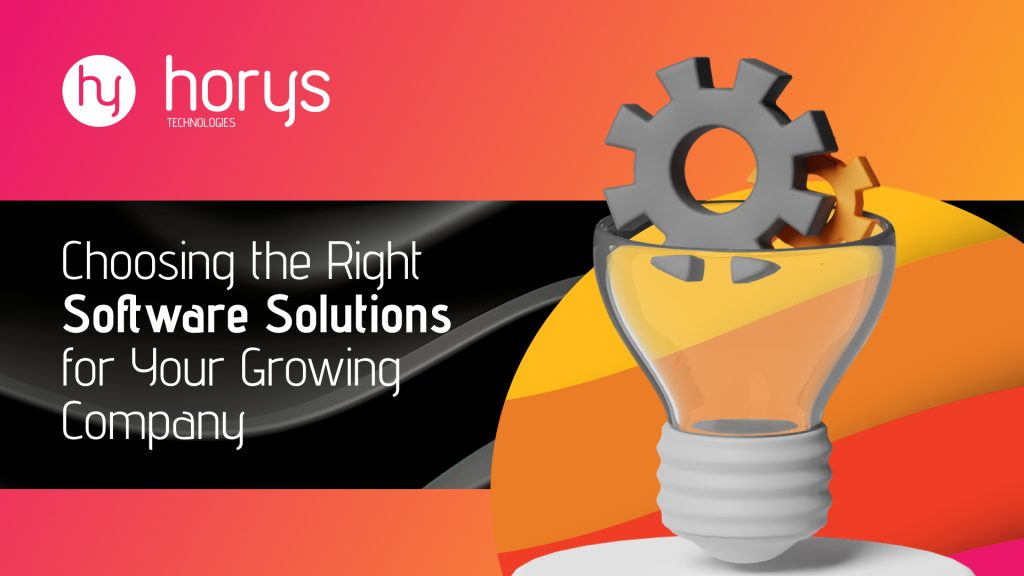Choosing the right software solutions for your growing company is critical to sustaining momentum, optimizing resources, and staying ahead of the competition. As businesses scale, their operational needs become more complex. While early-stage companies can often rely on manual processes or basic tools, growth introduces new challenges that require advanced, adaptable, and efficient solutions.
This in-depth guide covers every aspect of selecting the right software solutions, ensuring your business can thrive in an increasingly competitive and technology-driven environment.
The Right Software Solutions
The rapid pace of technological innovation has transformed how businesses operate. From automating mundane tasks to improving collaboration, software solutions are integral to running a modern, efficient business. However, the process of selecting the right tools can feel overwhelming due to the sheer number of options and the unique needs of each company.
Why Software is Crucial for Scaling Businesses
- Efficiency: Automates repetitive tasks, enabling teams to focus on higher-value work.
- Scalability: Handles increasing data and user demands as your business grows.
- Competitiveness: Keeps you ahead by improving decision-making and enhancing customer experiences.
- Resource Optimization: Reduces costs associated with manual errors, delays, or redundant processes.
The Risks of Not Investing in the Right Software:
- Operational bottlenecks due to inefficiencies.
- Poor customer experiences from outdated or manual workflows.
- Difficulty competing in industries adopting cutting-edge technology.
1. The Right Software Solutions for Your Company: Assessing Your Company’s Needs
Before evaluating software options, it’s crucial to understand your business’s unique requirements. Skipping this step can lead to over-investing in tools you don’t need or underestimating future challenges.
Key Steps for Needs Assessment
- Identify Current Pain Points:
- Where are inefficiencies causing delays or errors?
- Are teams spending too much time on manual tasks?
- Define Business Objectives:
- Are you focusing on growth, customer retention, cost reduction, or process automation?
- What are your long-term goals over the next 3–5 years?
- Consider Scalability Requirements:
- Will the software handle a growing number of users, clients, or transactions?
- Is it flexible enough to adapt as your company’s needs evolve?
Example:
A growing online retailer may notice challenges in inventory tracking, order fulfillment, and customer service as sales increase. Investing in a scalable inventory management system and a CRM ensures these issues are addressed before they impact operations.
2. The Right Software Solutions for Your Company: Understanding Different Types of Software Solutions
Not all software is created equal. Each type serves specific purposes, and understanding the categories will help you focus on the right solutions.
Key Categories of Business Software
- Operational Software:
- Enterprise Resource Planning (ERP): Centralizes key business processes like finance, HR, and supply chain. Examples: SAP Business One, Microsoft Dynamics 365.
- Customer Relationship Management (CRM): Manages customer interactions and sales pipelines. Examples: Salesforce, HubSpot.
- Collaboration Tools:
- Facilitate teamwork and communication. Examples: Slack, Microsoft Teams, Trello.
- Financial Software:
- Handles billing, budgeting, and expense tracking. Examples: QuickBooks, Xero, FreshBooks.
- Industry-Specific Tools:
- Tailored to specialized needs, such as:
- Procore for construction project management.
- Shopify for e-commerce.
- Epic for healthcare.
- Tailored to specialized needs, such as:
Benefits of Categorizing Needs:
Grouping your needs by software type ensures you’re targeting the most impactful areas for improvement.
3. Evaluating Scalability and Flexibility
Growth demands adaptability. Software solutions that cannot scale alongside your business may create bottlenecks, requiring expensive replacements later.
Key Considerations for Scalability
- Cloud-Based Solutions:
- Platforms like AWS, Google Cloud, and Microsoft Azure offer scalable infrastructure that adjusts to fluctuating demands.
- Benefits: Cost-effective, flexible, and accessible from anywhere.
- Modular and Add-On Features:
- Choose tools like Zoho or Odoo, which allow you to add features as your business grows.
- Future-Proofing:
- Look for software that integrates emerging technologies, such as AI or IoT, ensuring long-term relevance.
Scalability in Practice:
A small restaurant chain may initially need basic accounting software but later require inventory management and employee scheduling tools as it expands to multiple locations.
4. Budget Considerations
Investing in software is a financial commitment, but effective budgeting ensures you’re getting the best value without overspending.
How to Budget for Software
- Calculate Total Cost of Ownership (TCO):
- Include upfront costs, licensing fees, training, maintenance, and future upgrades.
- Free vs. Paid Software:
- Free tools like Google Sheets or Trello are excellent for small-scale needs but may lack advanced features.
- Paid options often provide greater functionality and scalability.
- Cost Avoidance:
- Avoid overspending on features you don’t need by focusing on tools aligned with your core business goals.
5. Prioritizing User Experience and Ease of Adoption
Even the most powerful software will fail if your team cannot use it effectively. Prioritizing user experience ensures smoother transitions and higher adoption rates.
Features to Look For:
- Intuitive Interfaces:
Tools like Monday.com and Asana offer user-friendly dashboards, reducing the learning curve. - Training and Onboarding Support:
- Look for vendors that provide tutorials, live demos, and customer support.
- Integration with Existing Tools:
Ensure compatibility with current software, such as accounting systems or CRM platforms.
6. Comparing On-Premises vs. Cloud-Based Solutions
Choosing between on-premises and cloud-based solutions depends on your company’s unique requirements.
Key Differences:
- On-Premises Software:
- Installed on company hardware.
- Offers complete control but requires significant IT resources.
- Example: Large corporations managing sensitive data.
- Cloud-Based Software:
- Hosted online, accessible from anywhere.
- Lower upfront costs and easy scalability.
- Ideal for small-to-medium businesses.
- Hybrid Models:
Combine on-premises and cloud-based features for flexibility.
7. Security and Compliance Considerations
Growing businesses handle increasing amounts of data, making robust security essential. Choosing software that complies with regulations also ensures legal safety.
Checklist for Security:
- Data Encryption:
Ensure sensitive information is protected during transmission and storage. - Compliance Standards:
- Healthcare: HIPAA.
- Finance: PCI DSS.
- General: GDPR.
- Vendor Security Audits:
Verify the vendor has certifications like ISO 27001 or SOC 2.
8. Integration with Existing Tools
Seamless integration prevents disruptions and ensures all systems work harmoniously.
Steps to Ensure Integration Success:
- API Capabilities:
Check whether the software supports APIs for connecting to existing systems. - Middleware Tools:
Use platforms like Zapier to bridge gaps between incompatible software. - Testing and Downtime Management:
Plan transitions carefully to minimize disruptions.
9. Measuring ROI and Business Impact
Selecting software is only the first step. Measuring its impact ensures it delivers value over time.
How to Measure ROI:
- Set Clear KPIs:
- Time savings, cost reductions, customer satisfaction scores.
- Example: Measure the reduction in manual invoice errors after implementing accounting software.
- Monitor Regularly:
- Use analytics tools to track performance.
- Request Feedback:
- Employees and customers can provide insights on usability and impact.
10. Future Trends in Business Software
The software landscape is evolving rapidly. Staying ahead of trends ensures your business leverages the latest innovations.
Emerging Trends:
- AI-Driven Tools:
Software like ChatGPT and Tableau AI enhances decision-making with predictive insights. - SaaS Expansion:
Subscription-based models continue to dominate for flexibility and affordability. - Blockchain Technology:
Enhances security and transparency, particularly in supply chains and financial transactions.
Conclusion: The Right Software Solutions
Choosing the right software solutions for your growing company is a strategic decision that requires careful planning. By assessing your needs, evaluating scalability, prioritizing security, and measuring ROI, you can select tools that drive efficiency and support sustainable growth.
Staying agile and adaptable ensures your company remains competitive in a dynamic business environment.
About Horys
A premier hardware and software solutions company, Horys’ technology is on par with global standards. Its offerings include a variety of hardware products like smartphones, tablets, and computers. And software products include server hosting and management solutions.
Disclaimer: This article combines insights from both human expertise and AI technology to provide informational content. It is for informational purposes only and should not be interpreted as financial advice or a recommendation to invest. Virtual asset investments are inherently volatile and risky. Horys provides no guarantee of accuracy or completeness for the information herein. Independent research and professional advice are recommended before engaging in any investment activity. Horys bears no liability for investment decisions based on this article.



